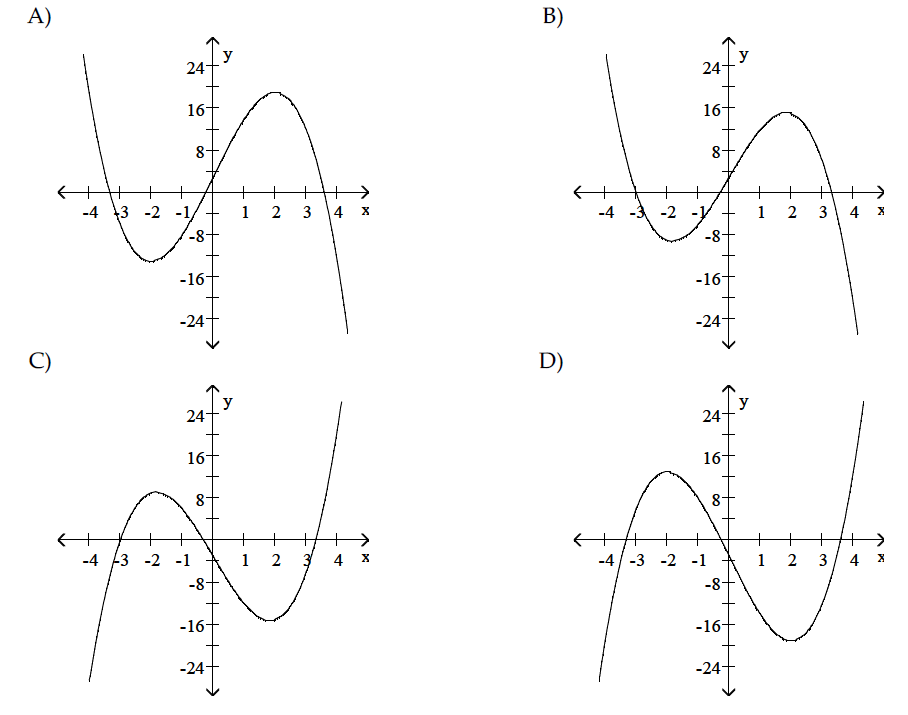How can I determine the graph using the properties ?


2 Answers
Explanation:
We know when
So D is the graph represented by the table.
Explanation:
Alright, we take this step by step.
Let's try to exclude some of the graphs for
Looking at them it's easy to tell that for
With this restriction possible graphs would be either
If you look at them , they look very identical in their shape so most of the properties should be satisfied by both of the graphs. Take a close look on what's happening in these 2 graphs when
When
Since one of the properties doesn't satisfy the


